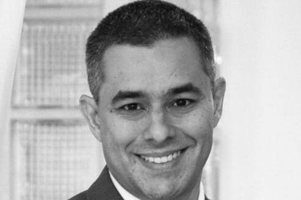Geodynamics announces successful test of geothermal energyBY RACHEL ALEMBAKIS | FRIDAY, 3 MAY 2013 5:04PMGeodynamics has announced that they have successfully generated electricity from geothermal 'hot rocks' technology at a pilot plant in South Australia. Related News |
Editor's Choice
Santos receives takeover offer from Abu Dhabi-led consortium
Santos has received a non-binding $8.89 per share cash offer from the XRG Consortium, led by XRG P.J.S.C., a subsidiary of Abu Dhabi National Oil Company (ANDOC), alongside Abu Dhabi's sovereign wealth fund ADQ and US private equity firm Carlyle.
What do the best-functioning boards look like?
The best-functioning boards are future thinkers, understand their ESG responsibilities and are able to show their "battle scars," according to two governance experts.
Funding lifts for climate, health, people startups
While funding for impact startups has broadly declined, those operating in climate, health and people has seen funding levels improve compared to three years ago, according to the Impact Startups Benchmark Report 2025.
Mind the gap: Investors' role in balancing fairness and competitiveness in executive pay
Investors have a significant role to play in helping to move the dial on executive remuneration, aiming to increase fairness and reduce inequality.


















The trouble is, the resource is not found everywhere, and the place it is found is stranded from the transmission grid by 600 Km of desert. Building a link to the grid would cost billions of dollars, and maintenance would be a nightmare, so Geodynamics want the Government to pay for that. "It is very unlikely that individual projects will proceed without guaranteed transmission infrastructure" (GEODYNAMICS - INFRASTRUCTURE AUSTRALIA SUBMISSION, 15 October 2008)
In November 2012, Chairman Keith Spence said, citing the energy regulator AEMO, "... Australia now has significant excess baseload capacity, and that new baseload investment is not required before 2020 at least." So a Government-funded grid connection is pie in the sky. Geodynamics knew this before the project started, but that didn't stop them promising 13 MW by 2006 and 275 MW by 2008.
Drilling the holes through fractured granite is fraught with difficulty. The Habernero #2 well had to be abandoned after the drill head became jammed, twice.
The water found at those depths is heavily mineralised, and after a circulation test between #1 and #3 was declared a success, #3 blew out and spewed boiling mineralised water onto the surface for 3 months. Geodynamics reckon better piping is the answer, so they drilled #4, but #1 still has the original piping and is another potential source of failure.
The "enhanced" part of hot rocks is done by fracking. This deliberately causes minor earthquakes and faulting, which are intended to be good for Geodynamics, but could have untold consequences for Lake Eyre and the Great Artesian Basin in general. The current program has caused 17,900 quakes, the largest of which was 3.0 Richter. A quake map http://www.peakoil.org.au/char... shows all the biggest quakes are along what must be a major fault line running NNE-SSW just 500 metres east of the drilling zone.
And all this to get at a source of hot water which is 191C by the time it gets to the surface. This figure will fall over time, because as heat is withdrawn, the surrounding heat must flow in through increasingly greater distances of granite, which a thermal insulator.
Origin Energy know their stuff and have had access to information which we haven't, and their pull-out in the face of yet more cost over-runs should tell you that this project is never going to be profitable.